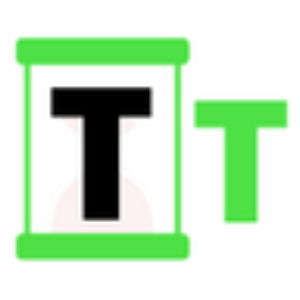Bank of America Stablecoins: Unlocking a New Era of Digital Finance
7 min read
BitcoinWorld Bank of America Stablecoins: Unlocking a New Era of Digital Finance Ever wondered if traditional banking giants would truly embrace the digital asset revolution? The answer, it seems, is a resounding ‘yes,’ especially when it comes to the intriguing world of Bank of America stablecoins . Recent statements from Bank of America CEO Brian Moynihan have sent ripples through both the traditional finance and cryptocurrency sectors, hinting at a future where stablecoins play a pivotal role in mainstream financial operations. For years, the crypto market has been viewed with a mix of fascination and skepticism by established financial institutions. While some have dipped their toes in, a full-fledged embrace has largely been elusive. However, Moynihan’s comments signal a significant shift, suggesting that one of the largest banks in the United States is not just observing but actively planning to integrate digital assets into its core business. Bank of America Stablecoins: A Strategic Move Towards Collaboration? The revelation from Bank of America CEO Brian Moynihan, as reported by FinancialJuice on X, confirms the financial behemoth’s intent to collaborate with ‘certain stablecoins.’ This isn’t a sudden pivot but rather an evolution of a strategy Moynihan previously hinted at: developing stablecoins both independently and through industry partnerships. This strategic embrace of Bank of America stablecoins signals a calculated move into the digital asset space, reflecting a growing acknowledgment of blockchain’s potential within the traditional financial system. Moynihan’s prior remarks indicated that Bank of America was not just passively watching the stablecoin space but actively working on its own solutions. This dual approach – internal development coupled with external partnerships – suggests a comprehensive strategy to navigate the complex landscape of digital currencies. It implies that BofA sees stablecoins not just as a passing trend, but as a fundamental component of future financial infrastructure. This commitment from a major financial player like Bank of America lends significant credibility to stablecoins and the broader digital asset ecosystem. It signifies a maturation of the market, where utility and regulatory compliance are becoming paramount, attracting institutions seeking efficiency and innovation. Why the Buzz Around Stablecoin Adoption? So, what exactly makes stablecoins so attractive to a financial giant like Bank of America? At their core, stablecoins are cryptocurrencies designed to minimize price volatility, typically by being pegged to a ‘stable’ asset like the US dollar or gold. This stability is a game-changer for institutions wary of the wild price swings often associated with Bitcoin or Ethereum. The potential for widespread stablecoin adoption across various financial applications is immense. Here’s why they are gaining traction: Price Stability: Unlike volatile cryptocurrencies, stablecoins offer a reliable store of value, making them suitable for transactions, savings, and accounting in a way volatile assets are not. Faster Settlements: Blockchain technology allows for near-instantaneous transactions, drastically cutting down settlement times compared to traditional banking systems, which can take days. Lower Transaction Costs: Stablecoins can significantly reduce the fees associated with cross-border payments and other financial transfers, benefiting both businesses and consumers. Global Reach: Being borderless, stablecoins facilitate international transactions without the complexities of traditional foreign exchange. Programmability: Built on blockchain, stablecoins can be integrated into smart contracts, enabling automated payments, escrow services, and other complex financial operations. For a bank like Bank of America, these advantages translate into operational efficiencies, cost savings, and the ability to offer more competitive services to its clients. Stablecoins represent a bridge between the efficiency of digital assets and the reliability demanded by traditional finance. The Expanding Horizon of Institutional Crypto Bank of America’s foray into stablecoins isn’t an isolated event; it’s part of a broader, undeniable trend: the rise of institutional crypto . For years, major financial players viewed cryptocurrencies with skepticism, if not outright disdain. However, as the digital asset ecosystem matured, and regulatory clarity slowly emerged, institutions began to recognize the transformative potential of blockchain technology and digital assets. This shift is driven by several factors: Client Demand: Institutional clients, from hedge funds to corporate treasuries, are increasingly seeking exposure to digital assets and blockchain-based solutions. Competitive Pressure: As some forward-thinking institutions embrace crypto, others risk being left behind in a rapidly evolving financial landscape. Efficiency and Innovation: Blockchain offers inherent efficiencies in areas like payments, clearing, and settlement, prompting banks to explore its use. Examples of this growing institutional involvement are plentiful. JPMorgan Chase launched its own JPM Coin for wholesale payments. Goldman Sachs has expanded its digital asset offerings. BlackRock, the world’s largest asset manager, has launched a Bitcoin spot ETF and is exploring tokenization. These moves collectively underscore a fundamental re-evaluation of digital assets within the traditional financial framework. The conversation has shifted from ‘if’ to ‘how’ and ‘when’ for many of these giants. Pioneering Digital Currency Innovation Bank of America’s strategic engagement with stablecoins is more than just an endorsement; it’s a step towards pioneering significant digital currency innovation . Imagine a world where cross-border payments, currently fraught with delays and high fees, become instantaneous and cost-effective. Stablecoins offer this promise, leveraging blockchain’s inherent efficiency. This move could accelerate the development of new financial products and services built on blockchain rails, impacting various sectors: Remittances: Making it cheaper and faster for individuals to send money across borders. Supply Chain Finance: Enabling real-time payments and tracking within complex global supply chains. Interbank Settlements: Streamlining the process of transferring funds between financial institutions, reducing counterparty risk. Tokenized Assets: Paving the way for the tokenization of real-world assets like real estate, art, and equities, making them more liquid and accessible. By partnering with established stablecoins, BofA can leverage existing infrastructure and liquidity, accelerating its entry into this space without building everything from scratch. This collaborative approach can foster an ecosystem where traditional finance and decentralized technologies can coexist and complement each other, pushing the boundaries of what’s possible in digital finance. Navigating the Future of Financial Sector Evolution: Challenges and Opportunities While the prospect of major banks embracing stablecoins is exciting, the path forward for financial sector evolution is not without its hurdles. Regulatory frameworks are still catching up with the rapid pace of technological advancement. Governments worldwide are grappling with how to classify, regulate, and oversee digital assets, especially stablecoins, which could impact monetary policy and financial stability. Here’s a snapshot of the key challenges and opportunities: Aspect Challenges Opportunities Regulatory Landscape Unclear legal frameworks, varying global regulations, potential for money laundering concerns, consumer protection issues. Regulatory clarity fosters trust, enables broader adoption, potential for new financial products, increased legitimacy. Technological Integration Interoperability issues between legacy systems and blockchain, scalability concerns, security vulnerabilities (hacks, exploits). Streamlined operations, enhanced efficiency, reduced costs, creation of innovative financial services, competitive advantage. Market Acceptance Public perception, education gaps, resistance from entrenched interests, competition from existing payment systems, user experience. Increased liquidity, expanded global reach, new revenue streams, competitive advantage for early adopters, financial inclusion. Economic Impact Potential impact on monetary policy, risk of financial instability if not managed properly, disintermediation concerns for traditional banks. Improved financial inclusion, efficient capital markets, potential for economic growth, enhanced global trade. Banks must also address concerns around cybersecurity, data privacy, and the sheer complexity of integrating new blockchain-based systems with their existing vast and often decades-old infrastructure. Despite these challenges, the opportunities for innovation, efficiency, and new revenue streams are too significant for major players like Bank of America to ignore. The Road Ahead: Actionable Insights for the Digital Economy Bank of America’s move into stablecoins is a clear signal: the digital transformation of finance is not just coming; it’s here. What does this mean for various stakeholders in the digital economy? For Consumers: Expect faster, potentially cheaper, and more transparent financial services. Cross-border remittances could become significantly more efficient. For Businesses: New payment rails and improved supply chain finance solutions could emerge, streamlining operations and reducing costs. Businesses might find it easier to conduct international trade. For Investors: Increased institutional involvement lends legitimacy to the crypto space, potentially leading to more robust infrastructure, regulated products, and broader market participation. For Regulators: This intensifies the urgency for clear, comprehensive, and harmonized regulatory frameworks that foster innovation while mitigating risks like money laundering and financial instability. This evolving landscape calls for continuous learning and adaptation from all participants. Understanding the nuances of stablecoins, blockchain technology, and the shifting regulatory environment will be crucial for navigating this new era successfully. Conclusion: A New Chapter for Finance Bank of America’s announcement to partner with stablecoins marks a pivotal moment in the convergence of traditional finance and the digital asset world. It’s a testament to the undeniable potential of stablecoins to revolutionize how value is exchanged, paving the way for a more efficient, inclusive, and interconnected global financial system. As financial institutions like BofA continue to explore and integrate digital currencies, we are truly witnessing the dawn of a new era in finance, one where innovation and collaboration redefine the very fabric of our economic interactions. This isn’t just about a bank adopting a new technology; it’s about a foundational shift that could redefine global commerce and everyday financial transactions for decades to come. The future of finance is digital, and Bank of America is clearly positioning itself at the forefront of this exciting transformation. To learn more about the latest crypto market trends, explore our article on key developments shaping institutional adoption in the digital asset space. This post Bank of America Stablecoins: Unlocking a New Era of Digital Finance first appeared on BitcoinWorld and is written by Editorial Team

Source: Bitcoin World



